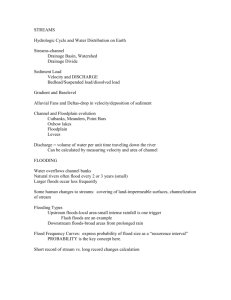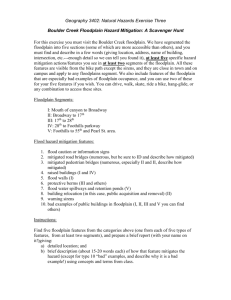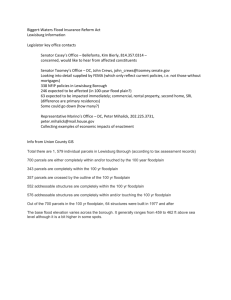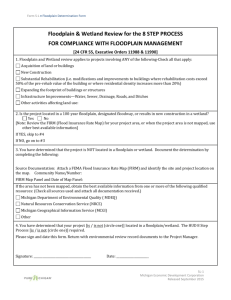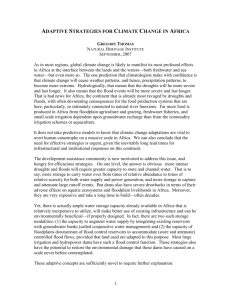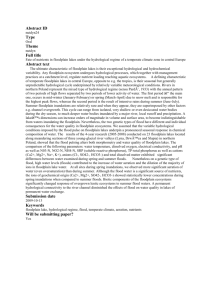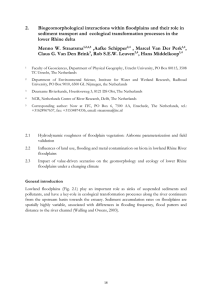streams, rivers, and floods - University of Hawaii at Hilo
advertisement
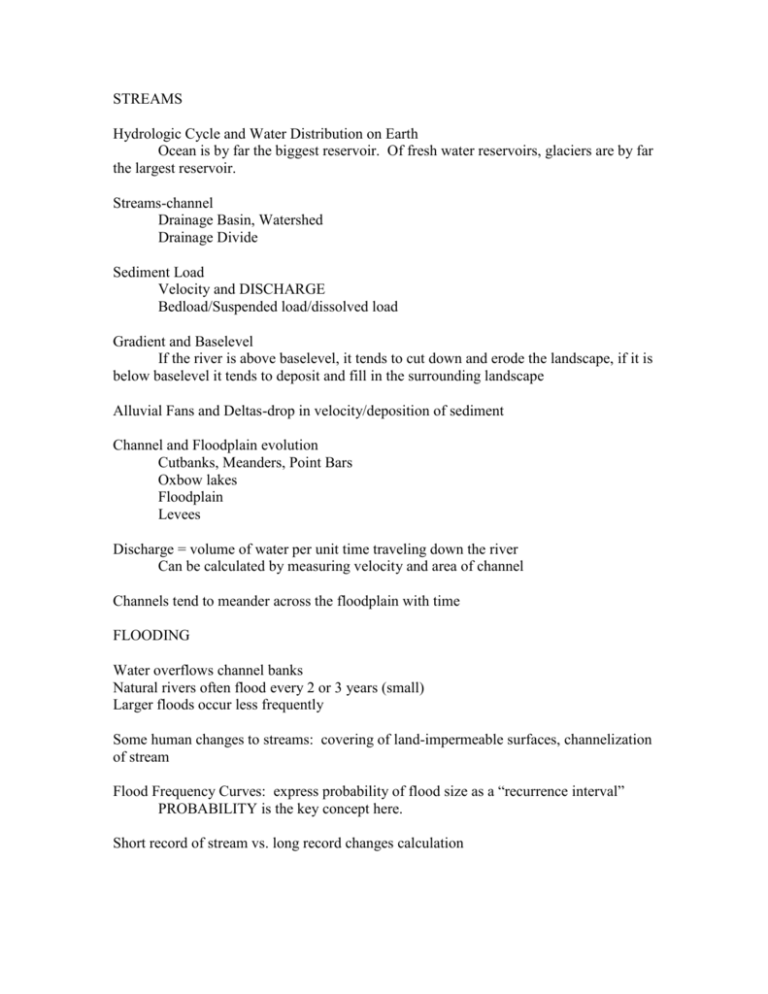
STREAMS Hydrologic Cycle and Water Distribution on Earth Ocean is by far the biggest reservoir. Of fresh water reservoirs, glaciers are by far the largest reservoir. Streams-channel Drainage Basin, Watershed Drainage Divide Sediment Load Velocity and DISCHARGE Bedload/Suspended load/dissolved load Gradient and Baselevel If the river is above baselevel, it tends to cut down and erode the landscape, if it is below baselevel it tends to deposit and fill in the surrounding landscape Alluvial Fans and Deltas-drop in velocity/deposition of sediment Channel and Floodplain evolution Cutbanks, Meanders, Point Bars Oxbow lakes Floodplain Levees Discharge = volume of water per unit time traveling down the river Can be calculated by measuring velocity and area of channel Channels tend to meander across the floodplain with time FLOODING Water overflows channel banks Natural rivers often flood every 2 or 3 years (small) Larger floods occur less frequently Some human changes to streams: covering of land-impermeable surfaces, channelization of stream Flood Frequency Curves: express probability of flood size as a “recurrence interval” PROBABILITY is the key concept here. Short record of stream vs. long record changes calculation Development and Modification in the Floodplain Increase in impermeable Surfaces (roads, parking lots, etc) Surface runoff Peak lag time shortened Channelization Straightening and stablization of the bank May help upstream flooding-increases flow and gradient May increase downstream flooding-increases amount of flow Dams Benefits include hydroelectric power generation, flood control, stable amount of water flow throughout the year for irrigation Drawbacks include flooding of the area behind the dam, changes in the sediment budget for the river system (loss of nutrients onto the floodplain and delta), leaching of the soil (Nile river case) Levees-sedimentation in channel, raises level of channel (NO Miss. River was 10-15 feet higher than Jackson Square
